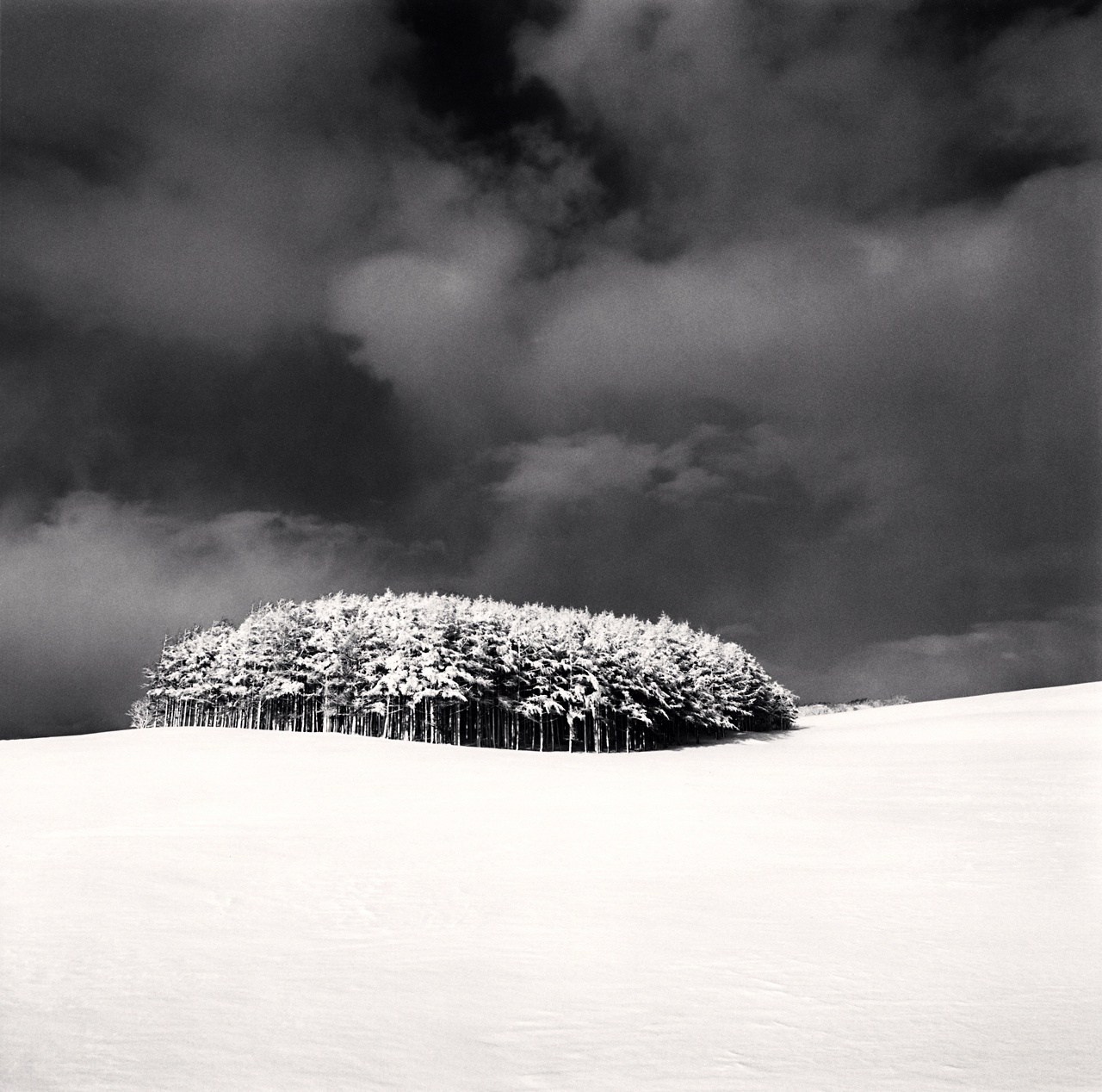Michael Kenna
White Copse Study 3, Wakkanai, Hokkaido, Japan, 2004
8x10” Silver Gelatin Print
16x20” Archival Mounted Print
Signed by Michael Kenna
Limited Edition of 45
16x20” Archival Mounted Print
Signed by Michael Kenna
Limited Edition of 45
'In my experience, there are usually a few obvious ways to photograph any given subject matter, and on first viewing, this is usually my modus operandi. I can't help myself....
"In my experience, there are usually a few obvious ways to photograph any given subject matter, and on first viewing, this is usually my modus operandi. I can't help myself. However, I feel very fortunate to still be using the somewhat archaic silver gelatin process, which does not immediately allow me to know what has been captured on film. Hence, I am never satisfied that I have indeed done justice to what I have encountered. There are obvious pros and cons to this way of working. One of the cons is that I sometimes spend hours photographing the same thing, with different angles and points of views, changing lenses and exposures, when in reality, my first exposure may well turn out to be the best. I continue to work not because I doubt my basic ability to expose correctly. It is that I am intrigued with the possibilities of what is not obvious and/or predictable. Such is the case with White Copse, Study 3, Wakkanai. I had already photographed these trees to my great satisfaction (reference White Copse Studies 1 & 2), but I felt there was even more potential. So, over the course of a few hours I walked around the trees, observing and photographing them. Nothing is ever the same, there are infinite possibilities. Which brings me to one of the pros of using film, the joy of later discovering an unexpected and delightful image. I printed this negative seven years after the photograph was made, six years after I printed Studies 1 and 2. The dark brooding sky juxtaposed with the scintillating snow covered field and trees was not my obvious first choice of image. I now wonder why I didn't recognize and acknowledge this photograph at the time. The benefit of hindsight I suppose. Being open to new possibilities is definitely a pro." Michael Kenna 2019
